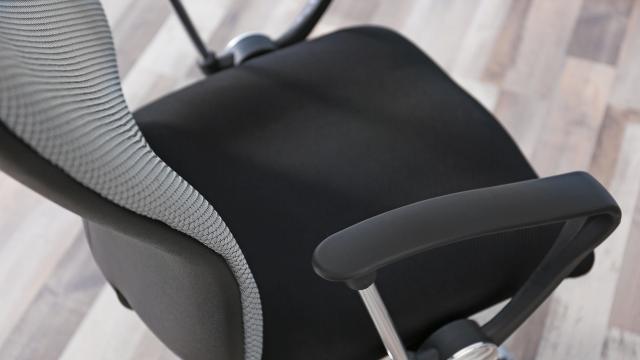The results of a small new trial may offer a salve to people worried about the health effects of sitting all day at work. The study found that taking walking breaks as short as five minutes every half-hour can stabilise blood sugar and blood pressure levels compared to prolonged sitting. People also reported feeling in a better mood and less fatigued when they took these regular walks than they did while constantly off their feet.
Sedentary behaviour is an important risk factor for various health conditions, from cardiovascular disease to type 2 diabetes. For many of us, it’s the long periods of sitting we do at work or at home that make up the bulk of our inactivity. Studies have linked prolonged sitting to a greater risk of hypertension, back and muscle problems, and even certain cancers, among others.
Regular exercise does seem to mitigate much but not necessarily all of the negative effects of sedentary behaviour elsewhere in our lives. So doctors and health organisations regularly remind people to proactively break up the time they spend sitting throughout the day. But exercise scientists at Columbia University say that there’s been relatively little research into how to make these breaks as effective as possible.
“Guidelines recommend that adults should ‘sit less, move more.’ But they don’t give the public any specific advice about what to do,” study author Keith Diaz, an associate professor of behavioural medicine at Columbia’s Vagelos College of Physicians and Surgeons, told Gizmodo in an email. “Just like we have recommendations on how many fruits and vegetables we should eat each day and how much we should exercise, we set out to find an answer for how to combat the harms of sitting. Ultimately, we wanted to know: what is the least amount of movement you have to do to prevent the health harms of sitting.”
To do so, they recruited 11 healthy adults to take part in a trial at the university. The volunteers all carried out five different sitting scenarios. In the baseline condition, they sat for eight hours in an ergonomic chair, while being allowed to read, work on a laptop or use their phones. In the other four, they went on light walks for varying lengths of time at varying points of the day. These included: one minute of walking for every half hour of sitting, one minute of walking for every hour, five minutes of walking for every half hour and five minutes of walking for every hour. They also took bathroom breaks as needed and ate regular meals. During each condition, Diaz’s team kept track of volunteers’ blood pressure and blood sugar — two common indicators of a person’s overall health — and filled out questionnaires.
Out of all the conditions, only one emerged as the clear winner.
“We found that a five-minute light walk every half hour was the only strategy that reduced blood sugar levels substantially compared to sitting all day. In particular, the blood sugar spike after eating was reduced by almost 60%,” Diaz said. “We also found that a five-minute light walk every half hour reduced blood pressure by 4 to 5 points compared to sitting all day.”
These benefits even extended to people’s mental health, with volunteers reporting that they experienced less fatigue and an improved mood when taking five-minute walks every half hour. The team’s findings were published Thursday in the journal Medicine & Science in Sports & Exercise.
The results are based on a very small sample size, so they should be viewed with some caution. Diaz additionally notes that the elaborate set-up they created in their lab won’t necessarily reflect the real world. But these conditions also mean that the authors could control for other variables that would make it hard to determine the optimal walking break. And at the end of the day, no one disagrees that walking in general is good for your health, no matter how much of it you can do. Indeed, while the five minutes of walking every half hour was the best option in the trial, even shorter and less frequent breaks still led to improved blood pressure levels on average for volunteers.
Diaz hopes their research can further highlight the perils of prolonged sitting and why employers should do something about it. Given the immediate benefits on people’s mental health, these breaks might even make for a more productive workplace, though that’s of course secondary to people’s health.
“Ultimately, there will need to be more studies that replicate our findings. But I don’t think we should continue to wait. There is enough evidence now about the health harms of sitting that employers should be promoting and encouraging regular breaks from sitting,” Diaz said. “How often and for how long may still need to be sorted out, but our findings are a good starting point.”
The researchers are already working on their next study, which will look to test out 25 strategies for offsetting the harms of sitting — including routines for working people who can’t take regular walking breaks, like truck and cab drivers.
